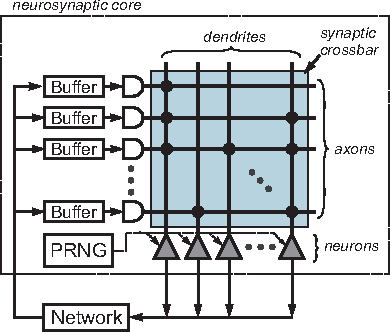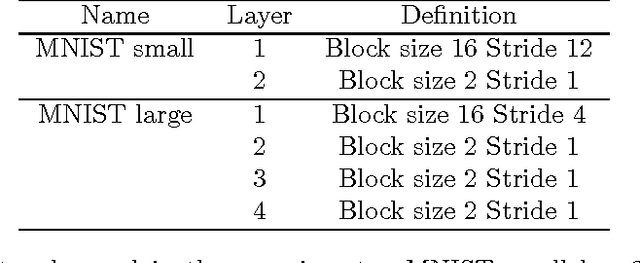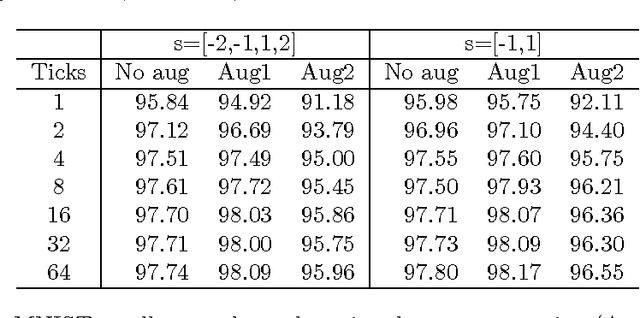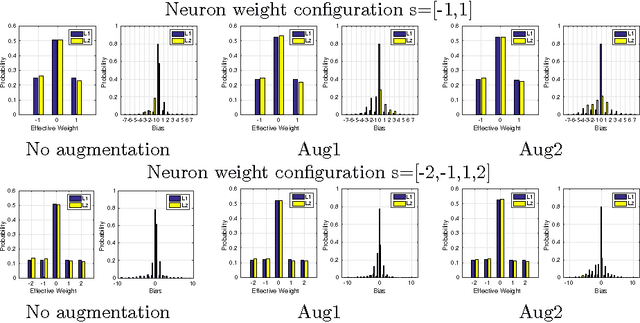Improving energy efficiency and classification accuracy of neuromorphic chips by learning binary synaptic crossbars
Paper and Code
May 25, 2016



Deep Neural Networks (DNN) have achieved human level performance in many image analytics tasks but DNNs are mostly deployed to GPU platforms that consume a considerable amount of power. Brain-inspired spiking neuromorphic chips consume low power and can be highly parallelized. However, for deploying DNNs to energy efficient neuromorphic chips the incompatibility between continuous neurons and synaptic weights of traditional DNNs, discrete spiking neurons and synapses of neuromorphic chips has to be overcome. Previous work has achieved this by training a network to learn continuous probabilities and deployment to a neuromorphic architecture by random sampling these probabilities. An ensemble of sampled networks is needed to approximate the performance of the trained network. In the work presented in this paper, we have extended previous research by directly learning binary synaptic crossbars. Results on MNIST show that better performance can be achieved with a small network in one time step (92.7% maximum observed accuracy vs 95.98% accuracy in our work). Top results on a larger network are similar to previously published results (99.42% maximum observed accuracy vs 99.45% accuracy in our work). More importantly, in our work a smaller ensemble is needed to achieve similar or better accuracy than previous work, which translates into significantly decreased energy consumption for both networks. Results of our work are stable since they do not require random sampling.
 Add to Chrome
Add to Chrome Add to Firefox
Add to Firefox Add to Edge
Add to Edge